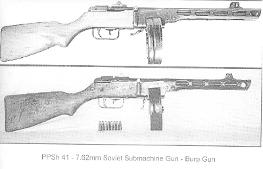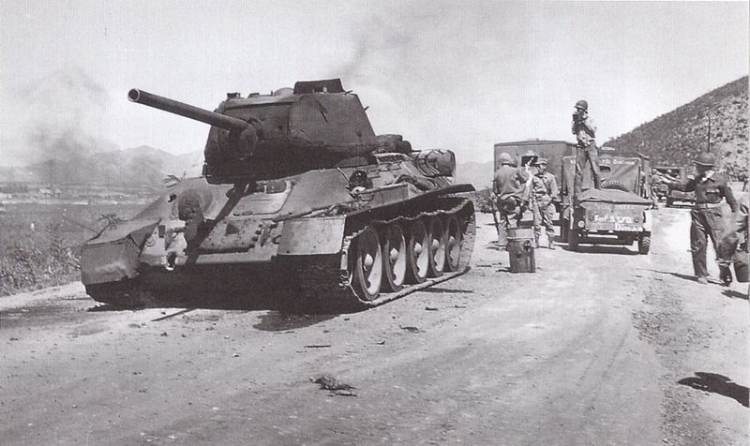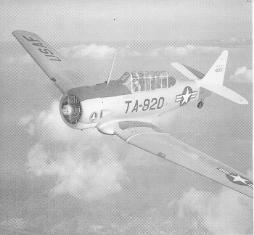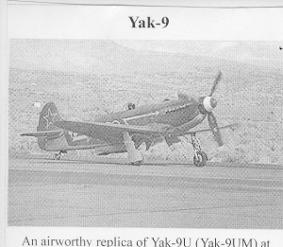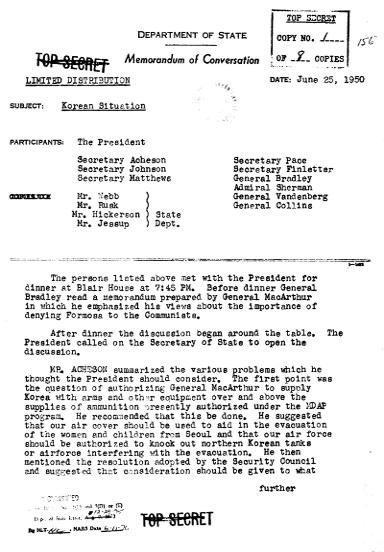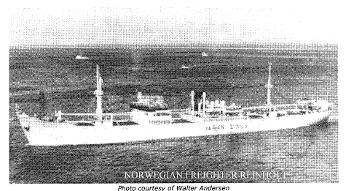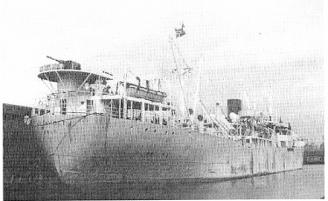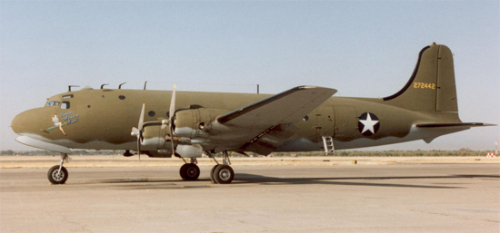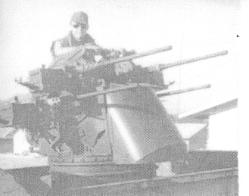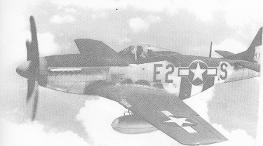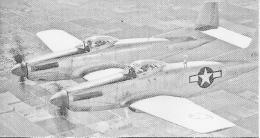THE KOREAN WAR - PRELUDE
There were a number of reasons for the Korean War. The first was that at the end of World War II it was decided to split the country in half, with the Russians accepting the surrender of all Japanese troops north of the 38th parallel and the United States accepting the surrender of all Japanese troops south of the line. The 38th parallel was chosen by the U.S. primarily because two major Korean ports, Inchon and Pusan, were south of that line. After the war ended, the XXIV Corps, consisting of the 6th and 7th Infantry Divisions and supporting units, landed at Inchon on September 8, 1945 to accept the surrender of all Japanese troops south of the 38th parallel. Because draftees were drafted for the duration of the war plus six months thereafter more than 8,000 draftees left the 6th and 7th Infantry Divisions, 7,500 from the 7th alone by the spring of 1946 and returned to the United States for discharge. When the 7th Infantry left Korea in December 1948, its commanding officer was Major General William Dean, who, when the war in Korea started, was in command of the 24th Infantry Division, which was the first division to land in Korea, beginning on July 1, 1950.
. . . . . . . . . . . . . . . . . . . . . . . . . . . . . . . . . . . . . . . . . . . . . . . . . . . . . . . . . . . . . . . . . . . . . . . . . . . . . . . .
Another reason was that in March 1948, the Department of the Army initiated "Operation Crabapple", a "Top Secret" operation to prepare the details of moving all U.S. combat troops out of South Korea. The completed document, including attachments and annexes totaled over five hundred pages. The Far East Command (FEC) was requested to prepare a study, to include the logistics of moving them out as well as what equipment, if any could be turned over to the South Korean government. The Department of the Army gave the FEC a rough timetable as to when and how long the withdrawal should take. General Almond, General MacArthur's Chief of Staff, coordinated the study. The final deadline established as a result of that study was that all combat troops would be gone from South Korea by the end of June 1949.
As a result, the 11th Airborne Division (the only division in the Far East which was even close to full strength) was scheduled to leave Japan around December 1948, traveling through the Panama Canal, debarking at New Orleans and traveling by train to their home base at Fort Campbell, Kentucky. At the same time, the remnants of the 7th Infantry Division left South Korea and replaced the 11th Airborne, which had the responsibility for northern Japan. The XXIV Corps was inactivated and the 32d Infantry Regiment of the 7th Infantry Division was designated as the newly activated 5th Regimental Combat Team, normally stationed on Oahu in Hawaii.
In March 1949, approximately 3600 enlisted men from the 1st Cavalry Division (Infantry) were transferred to the 7th Infantry Division mostly to fill out the depleted 32d Infantry Regiment. That number included 1200 enlisted men from the newly deactivated 12th Cavalry Regiment, which had been part of the 1st Cavalry Brigade of the 1st Cavalry Division. In addition, 750 enlisted men from the 1st Cavalry Division Artillery were transferred to the 7th Infantry Division Artillery.
As of June 1950, the only unit at close to full strength was the 25th Divisions 24th Infantry Regiment, which had been designated a segregated unit by an act of Congress in the 1860's. As a result, most black enlistees and draftees were assigned to that unit.
In October 1951 with the nominal desegregation of the Army, the 24th Regiment was deactivated and all the men left in it were transferred to other units, including the 14th Infantry Regiment, which took its place. Every other combat unit in the Far East was at about 60 to 70 percent of authorized strength. On a more interesting note, I talked with a man who had enlisted in 1948, was assigned to the First Cavalry Divisions 99th Field Artillery Battalion. He was one of about 200 men in his unit that were transferred to the 7th Infantry Division Artillery. When the war in Korea began, he was transferred to the 24th Infantry Division Artillery.
In mid 1949, General Headquarters (GHQ), FEC's responsibility for Military and Civil Affairs in South Korea was terminated. Activities there were coordinated with and through the American Ambassador to South Korea, Mr. Muccio and the Joint Chiefs of Staff (JCS). Thereafter, until authorized by President Truman on June 28, 1950, the sole responsibility of the Far East Command was to deliver to a South Korean port, everything destined for the Korean Military Advisory Group (KMAG) and to provide assistance in the form of ships and planes to evacuate Americans in the event of an emergency.
First priority for any new equipment was to troops stationed in Europe. Much of the equipment in use in Japan was brought there when the first troops landed there, so had been through the war in the Pacific. At the end of the war, large quantities of equipment which had been brought to various staging areas in the Pacific had been left there because of the cost of bringing it back to the United States. Much of it had been donated to local governments. In one instance, large numbers of trucks and other vehicles and equipment were dumped into the ocean so as to form an artificial reef and provide living space for local sea life. In 1948, General MacArthur initiated "Operation Roll-Up" which was to bring any equipment and supplies still left back to Japan for refurbishing in Japanese factories under the supervision of Americans. These activities were what gave an edge to Japanese automaker Toyota. Vehicles were refurbished, tires retreaded, engines and transmissions were rebuilt. Small arms ammunition which had been packed in hermetically sealed containers was brought back for use in marksmanship training. The program was so successful in saving tax dollars that a similar program was initiated in Europe.
In June 1949, the Joint Strategic Plans and Operations Group (JSPOG) of the Far East Command formulated a plan designated "Operation Sassafrass", which set forth the details of evacuating all Korean Military Advisory Group (KMAG) and civilians from South Korea. The plan was approved on July 10, 1949.
Another factor which resulted in the war was the fact the President Syngman Rhee of South Korea was a rabid nationalist and anti-communist. Therefore, U.S. officials did not want to provide South Korea with equipment would make President Rhee think that he could successfully invade North Korea. Thus, he was provided only a few training aircraft, no fighters or bombers. He was also provided no armored vehicles and no long range artillery. Most of the men in the South Korean Army and Constabulary used weapons taken from Japanese troops. They used two bolt action rifles, one a 7.7 mm and the other a 6.5 mm. Their machine guns were also leftover Japanese weapons. On the other hand, Russia supplied the North Korean Peoples Army (NKPA) with the T-34 tank, considered the best battle tank in the world towards the end of WW II. They also furnished bolt action Mosin-Nagant 7.62 rifles (which had been replaced in the Russian Army by the semi-automatic AK-47), light and heavy machine guns and mortars. They were given the 7.62mm caliber PPSh-41 submachine gun which had a 71 round capacity magazine. They also received vehicle drawn and self propelled artillery and anti aircraft weapons. Aircraft furnished by the Russians included the fighter-bomber version of the YAK-9 and a limited number of twin engined bombers. Furthermore, every NKPA unit was staffed with Russian advisors down to at least the regimental level. From all this, you can see that an invasion by the NKPA was a certainty, with the cards stacked in favor of the NKPA and against the South Korean Army and Constabulary.
IT MUST BE NOTED THAT WHEN GENERAL MACARTHUR WAS ORDERED TO MOVE ALL COMBAT TROOPS FROM SOUTH KOREA HE PREDICTED THAT THE NORTH KOREANS WOULD INVADE SOUTH KOREA WITHIN A YEAR. IN APRIL 1949 HE THRU GENERAL WALKER, 8TH ARMY COMMANDER ORDERED THAT THE PRIMARY DUTY OF ALL COMBAT UNITS IN JAPAN BE CHANGED FROM OCCUPATION DUTY TO BEING COMBAT READY, IN EARLY MAY, MY UNIT, THE 8TH CAVALRY UNIT MOVED FROM ITS TWO LOCATIONS NEAR THE TOKYO AREA TO THE COMBAT TRAINING AREA AT CAMP MC NAIR ON THE LOWER SLOPES OF MT. FUJI. I MUST HAVE FIRED 3 OR 4 HUNDRED ROUNDS DURING MARKSMANSHIP TRAINING. I LEFT IN MID NOVEMBER FOR THE U.S. FOR DISCHARGE AT THE END OF MY ENLISTMENT.
KNOCKED OUT T-34 TANK-DAMAGED SEPTEMBER 1950
T-6 Trainer - The type supplied South Korea by the United States. South Korean pilots used these aircraft to try to drop bombs on the North Koreans, especially the T-34 tanks. Unarmed, they were no match for the YAK fighters shown below.
Early in the morning Sunday June 25, the NKPA attacked across the 38th parallel simultaneously at multiple locations. At 3:45 PM the 8th Army instructed the 24th Division to prepare to execute plan "Sassafrass". At 4:00 PM, Lieutenant Colonel Duryea, Commander of the 118th Station Hospital was requested to have 5 Medical Officers placed on alert.
A copy of the Memorandum of Conversation between President Truman and the thirteen individuals listed on the Memorandum is shown below. Remember that, for the most part, June 25 in Washington, D.C. was June 26 in Korea. This is only the first page of that Memo. I was unable to find the second page.
Colonel Leigh, G-1(Personnel), 8th Army called at 9:45 AM on June 26th with the information that 700 evacuees would embark on two ships, the Norge and the Rhinelander at Inchon at about 10:00 AM. Evacuees consisted of Americans, British, Chinese and stateless persons (White Russians-the term designated Russians who had left Russia when the Bolsheviks took over and who were not citizens of any country) and would proceed to Sasebo. At 11:30 AM the freighters were diverted to Fukuoka. At 11:45 a G-1 representative from the 8th Army called and said that evacuees should be sent by rail to predetermined hotels. A message relayed by 8th Army from the ship at sea that accommodations aboard the ship were bad, passengers could not sleep, there were no bathroom facilities and that morale was poor. Considering that the normal crew complement for this type of ship was between six and ten and that the ship was a commercial freighter, 682 passengers would make it pretty crowded! At 3:00 PM, Mr. Duffy, the American Red Cross representative confirmed that funds were available for loans to the evacuees.
At 11:50 PM it was confirmed that the Rhinehold, of Norwegian Registry, had departed Inchon at 5:30 PM with 682 passengers and was proceeding at 14 knots with estimated time of arrival at Fukuoka at 4:00 AM on June 28 for an estimated transit time of thirty-four and a half hours. It was escorted by two U.S. Destroyers, the DeHaven and Mansfield. Actual arrival time was delayed by high winds. Apparently the radio operator at 8th Army misunderstood the transmission from Seoul as the original report was for two ships as noted earlier. He evidently mistook "Norge" for a ship name and not the country of origin. The other name reported was Rhinelander. There is no record of a Norwegian freighter named either Rhinelander or Rhinehold, however there is one by the name of Reinholt. The call log at the 24th Infantry Division Personnel records that one woman was pregnant with a due date of July 1. It also records that "A Mr. and Mrs. Hill, alcoholics, were put on board in strait jackets". Another entry was: A Mr. Olsen was cleared for entry into Tokyo General Hospital (He was suffering from Polio and was in an Iron Lung). Because of his condition, he was not transported aboard the freighter, but was aboard a U.S. Navy ship which was assigned to escort the freighter.
PICTURE OF THE REINHOLT TAKEN DURING WW II. NOTE THE GUN PLATFORM MOUNTED ON THE STERN.
At 6:00 AM on June 27, 1950, six C-54 aircraft (shown above) began leaving itazuke Air Base in southern Japan, flying to Kimpo Air Base near Seoul. They picked up evacuees and returned to Itazuke with the first two planes returning there by 8:30 AM. A total of 203 persons arrived that morning. By the end of the day, a total of 856 persons had arrived by air and an additional 103 had arrived by ship.
On June 27, General MacArthur, with the permission of the JCS, sent a group of 15 officers and enlisted men in his C-54 "Bataan" to assess the situation in South Korea. They landed at the Suwon Airport and drove north to the Han River. They returned to Tokyo and reported to General MacArthur. A portion of an Army Map Service topographical map of the Seoul area showing the Han River is shown above.
JUNE 28: On June 28 President Truman authorized US Air Force planes to begin attacking North Korean troops and installations. At 9:45 AM. the ship "Letitia" arrived at Fukuoka with 70 evacuees, mostly missionaries.
JUNE 29: On June 29, General MacArthur flew to Suwon, taking along many of the same persons who had made the first trip. His pilot, Colonel Storey had to fly over a burning C-54 transport at the end of the runway so he could land. They all drove the approximately 20 miles north to the Han River to have a personal look. After they all got off the plane, Colonel Storey flew back to Fukuoka, the closest airfield in Japan to refuel and the fighter aircraft which had escorted his plane there also had to return. While they were gone, Russian built YAK 9B OR YAK 9TD's again strafed the Suwon airport, destroying a C-47 transport on the ground. Also on June 29th, units of the 19th Infantry Regiment of the 24th Infantry Division had just completed the first three weeks of an eight week training course in amphibious training at the Eighth Army's Amphibious Training Center at Camp McGill near the old Japanese Naval Base at Yokusuka. Earlier in the year, General Walker, the Eighth Army Commander, at the direction of General MacArthur, had ordered that at least one battalion of every regiment of every division in Japan complete eight weeks of training at that facility. It was operated primarily by Marine Corps amphibious specialists on loan to the Far East Command (FEC) from the Navy. On that same day, North Koreans captured Kimpo Air Base. US Aircraft strafed North Korean troops and pack animals crossing the Imjin River north od Seoul. Truck and tank convoys were attacked. A railroad bridge north of Munsan was bombed. A troop train hear Kaesong, north and west of Seoul was attacked with rockets, bombs and machine gun fire.
A landing by North Korean troops in the vicinity of Mukhojin-ni was reported. That town is about 35 miles south of the 38th parallel, north of Samchock on the East coast of Korea. The landing was supported by four unidentified ships (reportedly Russian destroyers or cruisers).
About 500 North Korean troops were reported to be advancing on Yongdok in Eastern South Korea. Guerrillas were rumored to be attacking Chinju near the southern tip of Korea and almost due east of Pusan.
Units of the 19th Infantry Regiment of the 24th Infantry Division had just completed the first three weeks of an eight week amphibious training course at the 8th Army Amphibious Training Center at at Camp McGill near the old Japanese Naval Base at Yokosuka. At the beginning of the year, General Walker, 8th Army Commander, at the direction of General MacArthur had ordered that the primary mission of all combat units in Japan be changed from Occupation duty to one of being Combat Ready. One part of that directive was that at least one battalion of every regiment of every division in Japan complete eight week amphibious training.
By the end of the day on June 29th, a total of 2,174 evacuees from Korea had arrived in Japan.
As a result of those strafings on June 29th, General MacArthur ordered Detachment "X-Ray" from the 507th Anti-Aircraft Artillery unit (AAA) of the 24th Infantry Division to be flown to Suwon that same day. The detachment consisted of 3 officers and 39 enlisted men with four quad .50 caliber machine guns to be deployed northeast of Suwon. After they arrived, four YAK's strafed and bombed them. (The YAK series of fighters were designed by Alexander Yakelov.) In all it's versions, there were almost 17,000 produced from 1942 through 1948. The versions used in Korea were probably YAK 9B's or YAK 9TD's, as they were the only two versions equipped for carrying bombs.) The Detachment shot down one YAK definitely and probably another. Five enlisted men were slightly wounded and another wounded so seriously that he was evacuated by air back to Japan. A search of the official archival records (Korean War Casualty File, 2/13/1950 - 12/31/1953) shows only two persons, a 1st. Lt. Joseph V. Bailey, Serial Number O-2210206 who was wounded on 29 June 1950 and returned to duty on the same day and a PFC Thomas Merante, Serial Number RA12285399, who was wounded so seriously that he was evacuated and eventually discharged from the Army on 21 August 1950.
TRAILER MOUNTED QUAD-50
The only fighter aircraft in the Far East able to remain over any points in South Korea for any length of time were the F-51 Mustang and the F-82 Twin Mustang. It was the F-82 which escorted General MacArthur's plane, the "Bataan" when he made the trip to Suwon on June 29th and it was Twin Mustangs which shot down the first three YAK fighters. The Quad-50's of Detachment X-Ray shown above had one positive and a possible YAK kill after they were sent to Suwon.
AN F-51 MUSTANG AND F-82 TWIN MUSTANG ARE SHOWN ABOVE
Topographical map above shows a portion of the Han River which runs south of Seoul with the town of Yongdongpo southwest of Seoul. Grid lines are 6 tenths of a mile apart.
On June 30th American planes were authorized to attack targets North of the 38th parallel. South Korean troops retreated to the south bank of the Han River. The 34th Infantry Regiment of the 24th Infantry Division was alerted to move to Korea by water. At 11:30 PM the units of the 19th Infantry Regiment were preparing to travel by rail from Camp McGill in central Honshu to Beppu on Kyushu and their base at Camp Chickamauga.
On July 1, Task Force Smith, consisting of two very understrength rifle companies, supported by two heavy mortar platoons and two sections of 75mm recoilless rifles was scheduled to fly from Itazuke to Pusan early in the day. Twenty-four C-54's were allotted for the trip. Due to bad weather at Pusan, the first two planes had to return with the third landing at Pusan mid-morning. Due to operational difficulties and bad weather, less than half of the force landed in Pusan this day. Those men and their equipment left immediately by train for Taejon. A detailed description of the actions of Task Force Smith can be found in the section "Battle at Osan-Task Force Smith Revisited".
